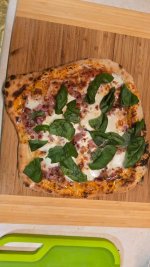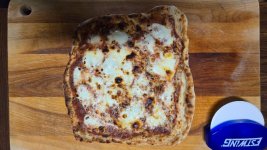Ed P
TVWBB Honor Circle
Milk, butter and sugar are other ingredients that can be used to promote browning. Store-bought pizza crust could be par-baked and could be self-rising which requires a specific temp to achieve success. You will have much more control over your pies when you roll your own using a yeasted crust.




